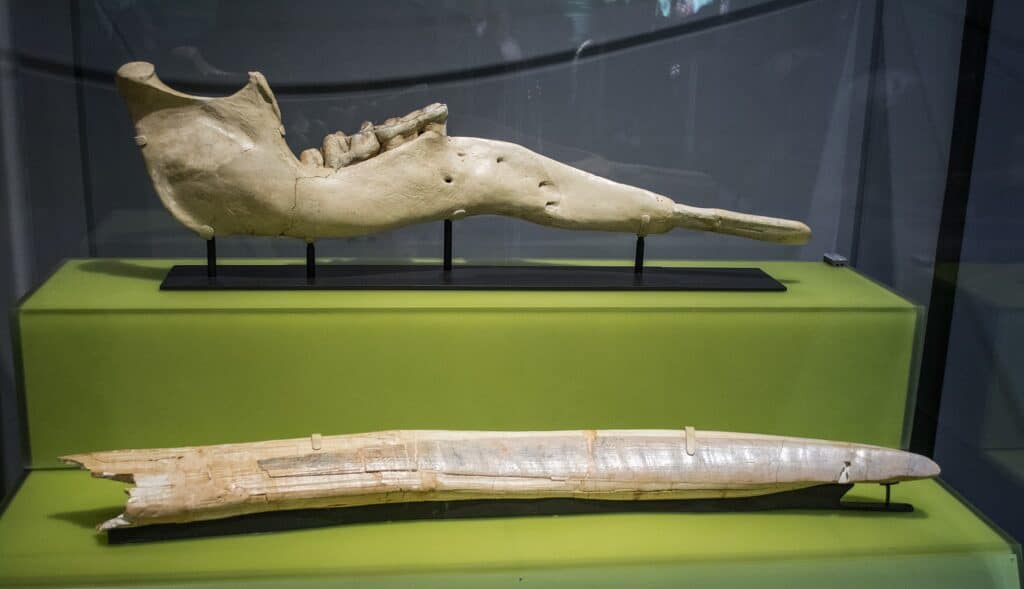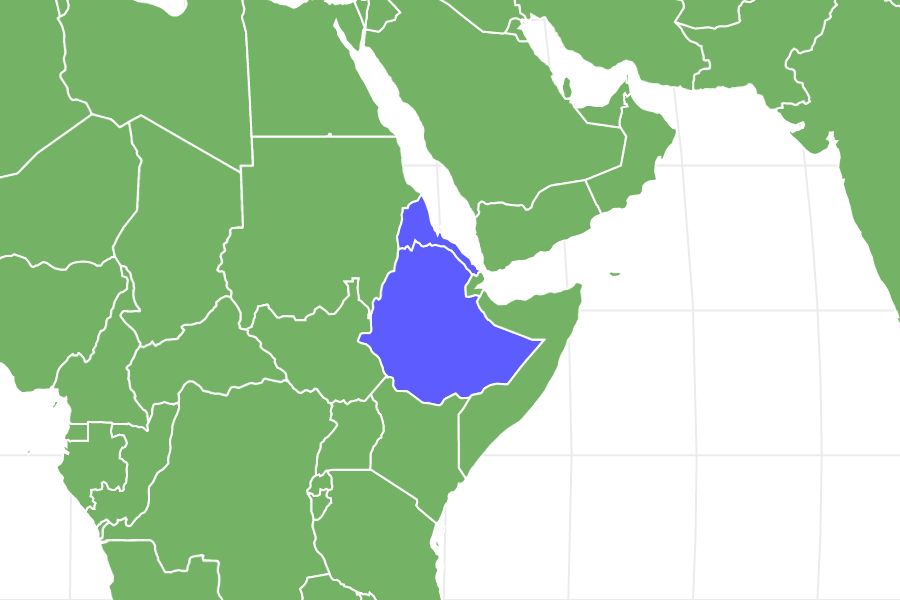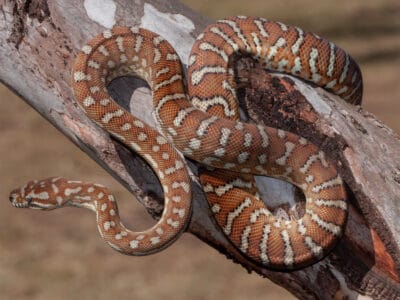Gomphotherium
.jumbotron {
background-image: url(“https://a-z-animals.com/media/2022/05/Gomphotherium_mandible_and_tusk_-_Cleveland_Museum_of_Natural_History_-_2014-12-26_20267008393-400×300.jpg”);
}
}
@media only screen and (min-width: 641px) and (max-width: 920px) {
.jumbotron {
background-image: url(“https://a-z-animals.com/media/2022/05/Gomphotherium_mandible_and_tusk_-_Cleveland_Museum_of_Natural_History_-_2014-12-26_20267008393-470×370.jpg”);
}
}
@media only screen and (min-width: 921px) {
.jumbotron {
background-image: url(“https://a-z-animals.com/media/2022/05/Gomphotherium_mandible_and_tusk_-_Cleveland_Museum_of_Natural_History_-_2014-12-26_20267008393.jpg”);
}
}
Gomphotherium
Gomphotherium Facts
- Diet
- Omnivore
- Special Features
- Double set of tusks shaped like shovels, large ears, long trunk
This post may contain affiliate links to our partners like Chewy, Amazon, and others. Purchasing through these helps us further the A-Z Animals mission to educate about the world’s species..

Spiders that fly! Fish that walk! And 1000+ more incredible animals. Discover them all for FREE
View all of the Gomphotherium images!
Gomphotherium Description & Size
Gomphotherium was a genus of extinct proboscides that lived during the Neogene and early Pleistocene periods, which were part of the Cenozoic Era. In Latin, this species’ name translated to “welded beast,” an accurate descriptor for the tough hide and large tusks.


Tim Evanson from Cleveland Heights, Ohio, USA / Creative Commons
What Did Gomphotherium Eat?
Gomphotherium was an herbivore eating a plant-based diet. One of the foods that this species consumed was a lot of grass, mainly in prairie-like areas close to swamps and wetland areas. Like the modern Elephant, this animal would likely have consumed grass for the bulk of its diet. A Gomphotherium would have been capable of ingesting multiple pounds of grass daily.
These animals were likely also able to eat roots and similar types of vegetation found in the ground. Their tusks had a scoop-like shape that would have made it easier for them to get roots out of the earth. In addition to this unique shape, the upper set of tusks had enamel, which may have made breaking up vegetation easier.
Habitat – When and Where It lived
This species lived during the Neogene Period. This period, which spanned 20 million years, was a time when many modern birds and mammals started to evolve into the species as we know them today. Grassland areas like prairies and savannahs started to emerge during this time.
North America was where the majority of the oldest fossils from this creature were found. However, this species had a broad range extending into Europe, Eurasia, and Africa. There is also evidence that some may have made it into South America and parts of Asia, providing a broad range. These animals would have had excellent chances of being found anywhere near water for the most part.
Threats And Predators
The Gomphotherium was not believed to have had many predators if any. However, as opportunistic browsers, this species was at risk for hazards relating to an herbivorous diet with a lot of competition from other animals. The period that these animals lived during was a time of transition for many species, with more occupying areas that other species may have previously inhabited.
Volcanic ash from eruptions that occurred during this era may have impacted this species. A high enough concentration of volcanic ash would have reduced the amount of sunlight, impacting the growth of local grasses. Ash may have also influenced the local soil conditions.
Discoveries and Fossils – Where It was Found
Gomphotherium fossils have been located on every continent, with the exception of Antarctica and Australia. The most recently located fossils, which go as far back as the Oligocene Epoch, were found in Ethiopia and Eritrea. Scientists found these fossils in the early 21st century.
Georges Cuvier, a 19th-century naturalist, first found Gomphotherium fossils in southwestern France. The most well-known Gomphotherium fossil, a skull, was discovered outside Toulouse, France, in the 19th century when a farmer dug the fossil up in a field. Karl Hermann Konrad Burmeister, a German zoologist, correctly distinguished these elephant relatives from Mastodons.
Extinction – When Did It Die Out?
The Gomphotherium went extinct just prior to the Holocene Ice Ages, which occurred between 12,000 and 10,000 years ago. This approximate date range marks one of the more relatively recent extinctions. A few factors contributed to the species extinction.
This species was already declining as more recent elephant species supplanted them. The swampier habitats that supplied these creatures’ unique food needs started to disappear. Because these habitats were more hospitable to emerging species like African Forest and Savannah Elephants, these other species withstood the changes.
The Gomphotherium’s tusks started to change, along with their environment. Their upper tusks started losing the enamel, which made it easier to grind certain foods. Over time, the lower tusks grew smaller or disappeared, making the Elephant as dependent on grass as its relatives.
Lastly, part of the species’ reason for going extinct was the coexistence with humans. Scientists have found remains of similar species that had embedded weapons. Such a large species likely would have been a prize for early hunters.
Similar Animals to The Gomphotherium
Amebelodon – This Elephant lived during the late Miocene Epoch 23 to 5 million years ago, with a range that included North America. These animals also featured a second set of shovel-like tusks that allowed them to consume tree bark and similar plant matter.
Palaeomastodon – This creature lived in swamps in North Africa during the Eocene Epoch 35 million years ago. The lower tusks were scoop-shaped, making it easier for them to pick up aquatic plants.
Platybelodon – This early Elephant lived 10 million years ago in the lake, river, and swamp areas in Africa and Eurasia. Like other early Elephants, this species used its lower tusks to dig up aquatic plants.
Primelephas – The animal dates back to the late Miocene Epoch, about 5 million years ago, when it lived in African woodland areas. Like the Gomphotherium that it possibly descended from, this Elephant had a lower set of tusks to dig up vegetation.
Stegotetrabelodon – This mammal lived in woodland areas in central Asia 6 to 5 million years ago during the Miocene Epoch. The species had two sets of tusks, and fossils have shown evidence of herding behavior.
View all 115 animals that start with G
Gomphotherium FAQs (Frequently Asked Questions)
When was the Gomphotherium Alive?
The Gomphotherium was alive from the Oligocene Epoch to the Holocene Ice Age, spanning 33 million to 10,000 years ago. At the end of its time on earth, this early Elephant shared its range with early Humans, leading to it becoming popular prey with early hunters.
How Big was Gomphotherium?
This species stood 8.2-9.8ft high and weighed 9,000lbs-10,200lbs. To put the size into perspective, this species was five times larger than modern Elephants.
Sources
- Fossil Guy, Available here: https://www.fossilguy.com/gallery/vert/mammal/land/gomphotherium/index.htm
- Prehistoric Wildlife, Available here: http://www.prehistoric-wildlife.com/species/g/gomphotherium.html
- Britannica, Available here: https://www.britannica.com/animal/gomphothere
- Everything Dinosaur, Available here: https://blog.everythingdinosaur.co.uk/blog/_archives/2018/07/14/rare-gomphotherium-skull-from-france.html
- Fossil Guy, Available here: https://www.fossilguy.com/gallery/vert/mammal/land/gomphotherium/index.htm
- Thought Co., Available here: https://www.thoughtco.com/prehistoric-elephant-pictures-and-profiles-4043331
- UC Berkeley, Available here: https://ucmp.berkeley.edu/mammal/mesaxonia/gomphotheriidae.php
- University of Kansas, Available here: https://geokansas.ku.edu/cenozoic-era-66-million-years-ago-to-present















